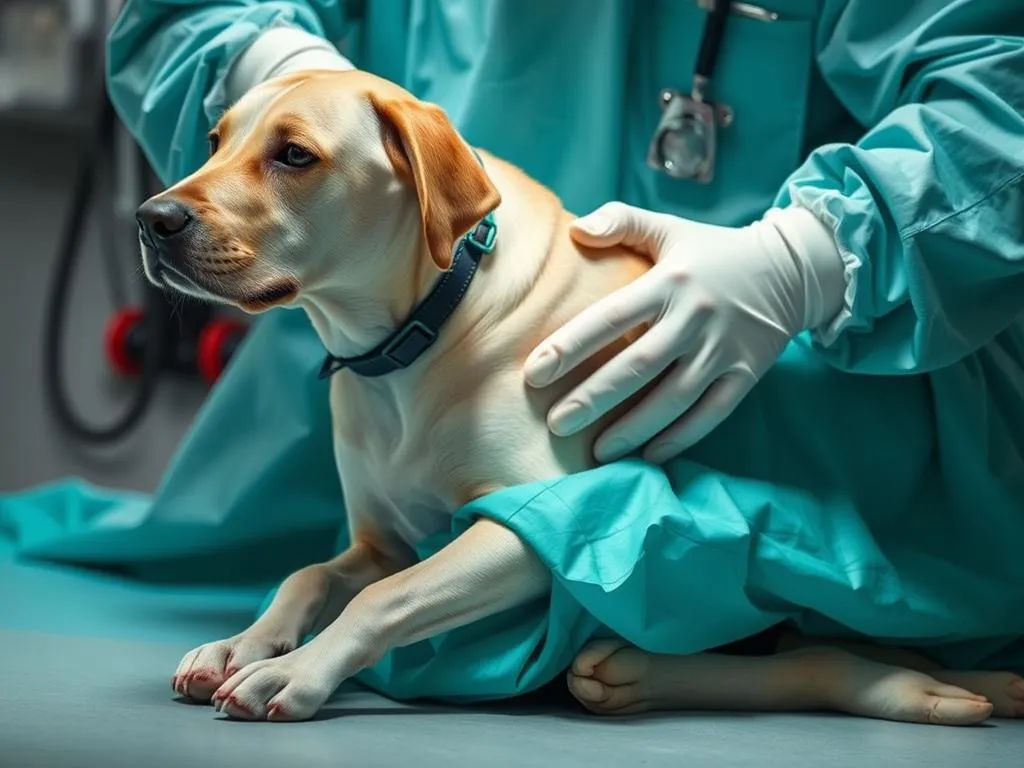
Accidents can happen at any time, and when they involve our furry companions, the emotional and financial toll can be significant. One of the more serious injuries that dogs can sustain is a broken leg, which often necessitates surgical intervention. Understanding the costs associated with dog broken leg surgery is crucial for pet owners facing this challenging situation. This article will delve into the types of injuries, symptoms, diagnostic processes, treatment options, costs, and even financial assistance available to pet owners.
Understanding Broken Leg Injuries in Dogs
Types of Leg Injuries
Dogs can experience various types of leg injuries, each requiring different approaches for treatment. Here are the most common types:
-
Fractures: These can be either simple (closed) fractures, where the bone is broken but does not pierce the skin, or compound (open) fractures, where the bone breaks through the skin. Compound fractures often require more extensive surgical intervention due to the increased risk of infection.
-
Dislocations: This occurs when the bones in a joint are forced apart. Dislocations often accompany fractures and can complicate the treatment process.
-
Stress Fractures: Less common than other types of fractures, stress fractures occur due to repetitive stress on the bone, typically seen in active dogs or those with specific health issues.
Common Causes
Understanding the causes of leg injuries can help prevent them. Here are some common scenarios leading to broken legs:
-
Accidents: Falls, collisions with cars or other animals, and rough play can lead to leg injuries.
-
Health Issues: Conditions like osteoporosis weaken bones, making them more susceptible to fractures. Tumors may also contribute to leg weaknesses.
-
Breed Predispositions: Certain breeds are more prone to specific injuries due to their size and structure. For instance, larger breeds may experience more severe injuries due to their weight.
Symptoms of a Broken Leg
Recognizing the symptoms of a broken leg is critical for timely veterinary care.
Physical Signs
When a dog has a broken leg, you might observe several physical symptoms:
-
Limping or Inability to Bear Weight: Your dog may show signs of limping or refuse to put weight on one leg.
-
Swelling and Bruising: Look for swelling around the leg and possible bruising, indicating trauma.
-
Pain Response When Touched: If your dog reacts with pain when you touch the affected area, it could be a sign of a fracture.
Behavioral Indicators
Beyond physical signs, behavioral changes can also indicate an injury:
-
Excessive Barking or Whining: Your dog may vocalize more than usual due to discomfort.
-
Reluctance to Move: A normally active dog may become lethargic or avoid activities they usually enjoy.
-
Changes in Appetite or Mood: Pain can lead to changes in eating habits or temperament.
Diagnosis of a Broken Leg
Prompt diagnosis is essential for effective treatment.
Veterinary Examination
The first step in diagnosing a broken leg involves a thorough veterinary examination. The vet will assess the physical condition of your dog and ask for a detailed history of the incident that caused the injury.
Diagnostic Imaging
To confirm the diagnosis, veterinarians often rely on imaging techniques:
-
X-rays: These are crucial for revealing fractures and understanding their severity. X-rays help determine if surgery is necessary.
-
Other Imaging Techniques: In some cases, more advanced imaging like CT scans or MRIs may be required, especially if there are complications or if the injury involves soft tissues.
Treatment Options for Broken Legs
Once diagnosed, treatment will depend on the type and severity of the injury.
Non-Surgical Treatments
For minor fractures or injuries, non-surgical options may be sufficient:
-
Splints and Casts: These are used to stabilize the affected leg, allowing the bone to heal naturally. However, they may not be appropriate for all types of fractures.
-
Pain Management and Rest: Your veterinarian may prescribe pain medications and recommend strict rest to facilitate healing.
Surgical Interventions
In more severe cases, surgery may be the best option:
-
Internal Fixation: This involves the use of metal plates or screws to stabilize the fracture within the body. It’s often preferred for complex fractures.
-
External Fixation: This method involves placing pins in the bone and connecting them to a stabilizing frame outside the body. It’s typically used for open fractures or when internal fixation is not possible.
Factors influencing the choice of surgery include the dog’s age, health, and the specific nature of the injury.
Cost Breakdown of Dog Broken Leg Surgery
Understanding the financial implications of dog broken leg surgery is essential for pet owners. Here’s what to expect.
Factors Affecting Costs
Several factors can influence the overall cost of surgery:
-
Location and Type of Veterinary Clinic: Prices may vary widely depending on whether you visit a general practice vet or a specialized veterinary hospital.
-
Severity and Type of Injury: A simple fracture will generally cost less to treat than a complex compound fracture.
-
Additional Treatments or Follow-Up Care: Post-surgery care, including medication and physical therapy, can add to the overall costs.
Average Cost Estimates
On average, the cost of dog broken leg surgery can range from $1,000 to $5,000, depending on the factors mentioned above. Here’s a general breakdown:
| Treatment Type | Estimated Cost |
|---|---|
| Non-surgical treatment | $300 – $800 |
| Internal fixation surgery | $2,000 – $5,000 |
| External fixation surgery | $1,500 – $3,000 |
| Post-operative care | $100 – $500 |
Hidden Costs
It’s important to be aware of hidden costs that may not be immediately apparent:
-
Post-operative Care and Rehabilitation: Depending on the severity of the injury, your dog may need physical therapy, which can add to costs.
-
Medications and Follow-Up Visits: Pain medications and regular follow-up visits to the vet can accumulate additional expenses.
Financial Assistance and Insurance Options
Navigating the costs associated with dog broken leg surgery can be daunting, but there are options available to help.
Pet Insurance
Investing in pet insurance can significantly alleviate financial burdens when veterinary care is required:
-
Overview of Coverage Options: Many pet insurance plans cover surgeries, including those for broken legs. It’s essential to understand what is included and any exclusions.
-
How to Choose a Pet Insurance Plan: Look for plans that offer comprehensive coverage, reasonable deductibles, and good customer reviews.
Financial Aid Programs
If insurance isn’t an option, various programs can provide assistance:
-
Local Charities and Animal Welfare Organizations: Many organizations are dedicated to helping pet owners afford necessary medical care.
-
Payment Plans Offered by Veterinary Clinics: Some clinics may offer payment plans or financing options to help spread out the cost over time.
Post-Surgery Recovery and Care
Proper care during the recovery period is crucial for your dog’s healing process.
Home Care Instructions
Following surgery, your veterinarian will provide specific instructions, which may include:
-
Managing Pain and Medications: Administer prescribed pain medications as directed and monitor your dog for any side effects.
-
Importance of Restricted Activity: Limiting your dog’s movement during recovery is vital to prevent re-injury.
Follow-Up Visits
Regular follow-up visits are essential to ensure a successful recovery:
-
What to Expect During Follow-Up Appointments: Your vet will check the healing progress and make adjustments to the treatment plan if necessary.
-
Signs of Complications to Watch For: Be alert for signs of infection, worsening pain, or swelling, and report these to your vet immediately.
Preventive Measures and General Dog Health Care
Investing in preventive care can help mitigate the risk of injuries in the future.
Regular Veterinary Check-Ups
Routine health assessments can help catch underlying health issues that may predispose your dog to injuries.
Safe Environments
Creating a safe environment for your dog can prevent accidents:
- Tips for Preventing Accidents at Home and Outdoors: Use baby gates, remove hazards, and supervise playtime to minimize risks.
Healthy Lifestyle Choices
Promoting a healthy lifestyle is essential for strong bones:
- Importance of Exercise and Nutrition for Bone Health: Regular exercise and a balanced diet rich in calcium and phosphorus contribute to overall bone health.
Conclusion
Understanding the complexity and costs associated with dog broken leg surgery can help pet owners make informed decisions during a challenging time. By being proactive in your dog’s health care, recognizing symptoms early, and seeking appropriate treatment, you can ensure a better quality of life for your furry friend.
As always, consulting with your veterinarian will provide you with personalized advice tailored to your dog’s specific needs. Your pet’s health and well-being are of utmost importance, and taking the right steps can make all the difference.









